-
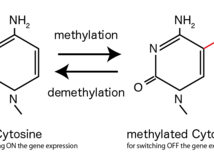
Explore the mystery of DNA methylation switch
Cellular Function Conversion Technology Team explores the mystery of DNA methylation switch.
>more
-
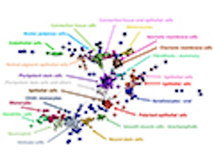
FANTOM5 releases first integrated atlas of microRNA expression in human primary cells
The human body consists of hundreds of different cell types with very different functions and behaviors, despite the fact that the genome sequence of almost all cells of an individual person is identical. The variation in functional roles of cells is accomplished by an intricate regulatory network consisting of regulatory proteins as well as regulatory RNAs such as microRNAs. Dysregulation of such networks plays a major role in disease development, in particular in cancer.
>more
-
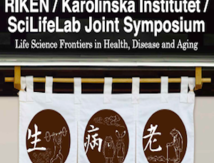
[November 16・17th] The 4th RIKEN/ Karolinska Institutet/ SciLifeLab Joint Symposium:ife Science Frontiers in Health, Disease and Aging
We will hold the Fourth RIKEN/Karolinska Institutet/SciLifeLab Joint Symposium in Kobe on November 16-17. The title of the symposium is “Life Science Frontiers in Health, Disease and Aging”.
>more
-
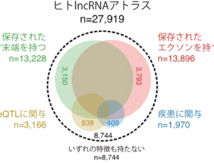
Improved gene expression atlas shows that many human long non-coding RNAs may actually be functional
While it was once believed that genes regulated biological functions almost exclusively by being transcribed to coding RNAs that were then translated into proteins, it is now known that the picture is much more complex. In fact, studies examining the association between genes and diseases have shown that most disease variants are found outside of protein-coding genes.
>more
-

Piero Carninci received Shimadzu Prize
Piero Carninci, RIKEN Center for Life Science Technologies Deputy Director, was awarded the Shimadzu Prize 2016. The prize is presented by Shimadzu Science Foundation, which was established by the Japanese manufacturing company Shimadzu Corporation.
>more
-
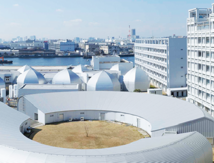
[Feb.23-Mar.1] The 7th Karolinska Institutet - RIKEN Joint International Doctoral Course "Bioinformatics analysis of gene regulation in omics data and its applications to medical problems"
A joint international doctoral course on the subject Non-coding RNA as epigenetic regulators: methods, omics technologies and applications in medicine between the RIKEN Yokohama institute Center for Life Science Technologies (CLST) and Karolinska Institutet Department of Cell and Molecular Biology (Sweden) will be held from February 23rd to March 1st at RIKEN Yokohama campus.
>more
-

[March 29・30th, 2017] RIKEN Interdisciplinary Symposium for Young Scientists 2017
RIKEN YOKOHAMA will have a symposium seeks to bring together outstanding young researchers from inside and outside Japan to give interdisciplinary presentations and exchange ideas that can contribute to career development and encourage joint research.
>more
-
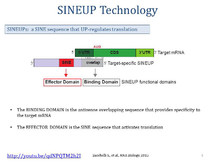
Human "junk" gene sequences can promote translation
One of the biggest surprises of the past decade of genomic studies was the discovery that, contrary to previous belief, the majority of the genome is not used to produce proteins. Initially, many scientists thought that these long non-coding RNAs were non-functional “noise,” but in recent studies, a growing fraction of these lncRNAs have been found to have regulatory functions.
>more
-
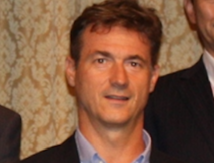
Piero Carninci chosen as “MICE ambassador”
The Japan National Tourist Organization (JNTO) has appointed RIKEN researcher Piero Carninci, who serves as Deputy Director of the RIKEN Center for Life Science Technologies, to be one of its “MICE ambassadors.
>more
-
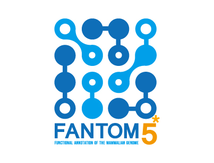
Continuously extensible database provides insights into our cells
Imad Abugessaisa(research scientist), Takeya Kasukawa (unit leader) from Large Scale Data Managing Unit, devision of Genomic Technologies, newly developed a database system, SSTAR (Semantic catalog of Samples, Transcription initiation And Regulators), to enable accesses to these useful results from the FANTOM5 project.
>more
-
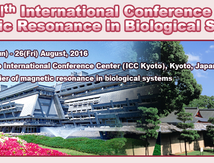
[Aug 21] RIKEN Symposium「ICMRBS 2016 Satellite workshop on “Current Status and Perspective of Super-High Field NMRs Operated beyond GHz”」
Maeda Facility Director from NMR Facility will have a workshop on ICMRBS 2016
>more
-
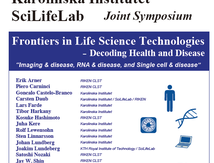
[Sep 29, 2016] The 3rd RIKEN CLST Karolinska Institutet SciLifeLab Joint Symposium: Frontiers in Life Science Technologies - Decoding Health and Disease
A joint international symposium: The 3rd RIKEN CLST Karolinska Institutet
SciLifeLab Joint Symposium will be held on 29th September.
>more
-
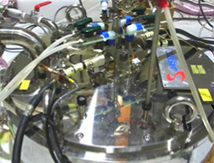
World record of a magnetic field strength for fully-superconducting magnets
The research team of RIKEN, NIMS, Kobe Steel and JEOL RESONANCE have successfully developed a 27.6 T NMR magnet, establishing the world’s highest magnetic field in high resolution NMR superconducting magnets (as of 01/Apr/2016).
>more
-
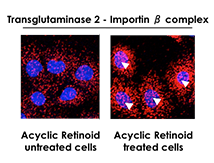
How Acyclic retinoid prevents the recurrence of Liver cancer
A research group lead by a Special Unit Leader, Soichi Kojima, of RIKEN Center for Life Science Technologies, reported a molecular basis for nuclear-cytoplasmic transport of transglutaminase 2 and a role of acyclic retinoid in it.
>more
-
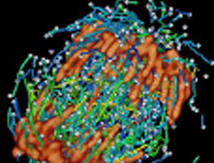
Yuko Kiyosue awarded for best paper in Science
Yuko Kiyosue, who leads the Cellular Dynamics Analysis Unit at the RIKEN Center for Life Science Technologies (CLST) was one of the authors of a paper awarded the AAAS Newcomb Cleveland Prize, which is given out every year for the best paper published in Science that year.
>more
-
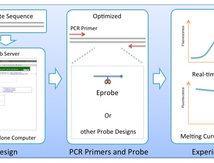
Computational tool for designing internal probes with matching primer sets for real-time PCR experiments and melting curve analysis of genetic variations
Edesign, an efficient computational tool for designing internal probes with matching primer sets for real-time PCR experiments and melting curve analysis of genetic variations, has been developed by researchers at RIKEN and the Japanese firm K.K.DNAFORM.
>more
-
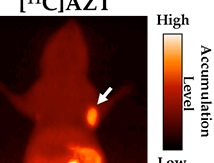
Development of Novel PET probe for detecting bone metastatic tumor with thymidine analogs
Bio-Function Imaging Team has tried to evaluate whether that 11C-labeled AZT and d4T, which are known as thymidine analogs and anti-HIV drugs, are useful for PET tumor imaging and it found that the [11C]AZT were remarkably accumulated in tumor.
>more
-
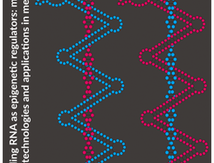
[Feb.8-12] Karolinska Institutet - RIKEN joint doctoral course 2016 "Non-coding RNA as epigenetic regulators: methods, omics technologies and applications in medicine"
A joint international doctoral course on the subject Non-coding RNA as epigenetic regulators: methods, omics technologies and applications in medicine between the RIKEN Yokohama institute Center for Life Science Technologies (CLST) and Karolinska Institutet Department of Cell and Molecular Biology (Sweden) will be held from February 8th to 12th at the Karolinska Institutet in Stockholm.
>more
-

Meet a new model animal, the ocelot gecko
A search is thus on for useful model reptiles to use in developmental biology. As part of this quest, researchers from the RIKEN Center for Life Science Technologies in Kobe focused their sights on the ocelot gecko (Paroedura picta), an adorable lizard from Madagascar, and produced an inventory of functioning genes in embryos of this species, with the goal of pinpointing the genes involved in its development.
>more
-

RIKEN CLST – Karolinska Institutet – SciLifeLab Joint Symposium on Structural Biology was held in Yokohama.
On November 12, the second RIKEN CLST – Karolinska Institutet – SciLifeLab Joint Symposium was held at Yokohama campus of RIKEN. This is the second event between RIKEN CLST and Sweden’s two major institutes, Karolinska Institutet and Science for Life Laboratory (SciLifeLab).
>more
-
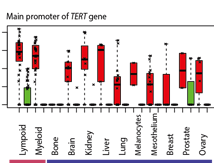
A treasure trove of new cancer biomarkers
Biomarkers, which allow diseases to be diagnosed and staged based on relatively non-invasive blood tests, have been identified for several types of cancers, but for most cancers remain elusive. Now, research conducted at the RIKEN Center for Life Science Technologies (CLST) in Japan and the Harry Perkins Institute of Medical Research in Australia has identified a large number of genes that are upregulated in many different types of cancer, opening the door for developing biomarker tests that could be used to detect cancers early, allowing for prompt treatment.
>more
-
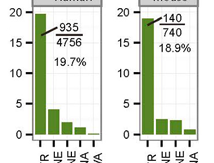
Retroviral RNA may play a part in liver cancer
An international group led by RIKEN in Japan and INSERM in France have found that retroviral long-terminal-repeat (LTR) promoters—a type of repetitive element that are widely distributed in the human genome—are highly activated in hepatocellular carcinomas, the most common type of liver cancer. Intriguingly, these areas—which are particularly activated in HCCs associated with viral hepatitis, are not normally activated in the liver but are in reproductive tissues such as testis and placenta. The study, published in Genome Research, suggests that the activation of LTR promoters might contribute to the development of cancer in the liver.
>more
-
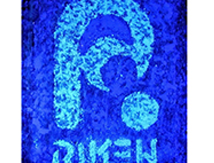
Forcing a molecular light switch
A chance observation led to RIKEN researchers discovering an organic compound whose fluorescence wavelength varies greatly when it is subjected to a mechanical force1. This property makes it an attractive material for various applications in security as well as medical imaging and therapy.
>more
-

Tracing the spread of vitamin B1
RIKEN was, from its earliest days, a pioneer in vitamin research. A century later, RIKEN is still on the leading edge of vitamin research. In May, researchers from the RIKEN Center for Life Science Technologies (CLST) announced the development of a technique to "tag" vitamin B1 and a thiamine analogue, fursultiamine, with a short-lived radioisotope of carbon, 11C (which has a half-life of 20.4 min), allowing the use of PET imaging to determine how the vitamin spreads through the body following injection.
>more
-
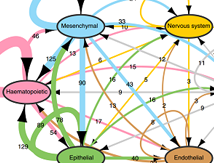
A dictionary of the language of cells
In their struggle to survive and prosper, multicellular organisms rely on a complex network of communication between cells, which in humans are believed to number about 40 trillion. Now, in a study published in Nature Communications, a research group led by scientists from the RIKEN Center for Life Science Technologies (CLST) has published an overall map of how the cells in the human body communicate by systematically analyzing the relationship between ligands—substances such as insulin and interferon that embody messages between cells, and receptors—the proteins on cell surfaces that receive these messages when bound by the ligands.
>more
-
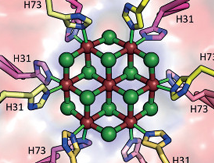
Engineering the world’s smallest nanocrystal
Now, in research published in Angewandte Chemie International Edition, scientists from the group of Kam Zhang at the RIKEN Center for Life Science Technologies (CLST) and the group of Jeremy Tame at Yokohama City University in Japan have used an artificially designed protein to create a cadmium chloride nanocrystal—the smallest crystal reported so far, made up of just 19 atoms—sandwiched between two copies of the protein.
>more
-
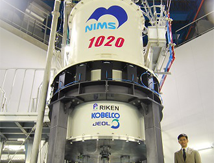
World’s Highest Magnetic Field* (1,020MHz) NMR developed
The research team of NIMS, RIKEN, Kobe Steel and JEOL RESONANCE successfully developed the NMR system equipped with world’s highest magnetic field, 1,020 MHz, supported by the JST-SENTAN program “Development of Systems and Technology for Advanced Measurement and Analysis”. This research result was published in Journal of Magnetic Resonance on 15 May 2015 (Kenjiro Hashi, Shinobu Ohki, Shinji Matsumoto, Gen Nishijima, Atsushi Goto, Kenzo Deguchi, Kazuhiko Yamada, Takashi Noguchi, Shuji Sakai, Masato Takahashi, Yoshinori Yanagisawa, Seiya Iguchi, Toshio Yamazaki, Hideaki Maeda, Ryoji Tanaka, Takahiro Nemoto, Hiroto Suematsu, Takashi Miki, Kazuyoshi Saito and Tadashi Shimizu, Title:”Achievement of 1,020 MHz NMR”, DOI:10.1016/j.jmr.2015.04.009).
>more
-
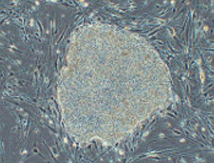
iPS and embryonic stem cells: not quite the same
In research recently published in Cell Cycle, a group of scientists led by Piero Carninci of the RIKEN Center for Life Science Technologies analyzed the genes that are transcribed in the nuclei of embryonic stem cells and iPS cells—a type of cell that is reprogrammed from normal somatic cells with the intention to have them act like stem cells—and discovered that there are significant differences between the two.
>more
-
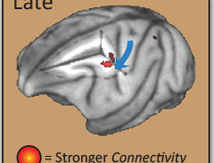
Remapping the damaged brain
Scientists at CLST, along with researchers from the AIST have identified a time-dependent interplay between two brain regions that contributes to the recovery of motor function after focal brain damage, such as a stroke. Published in the Journal of Neuroscience, the research shows that when motor functions are remapped through rehabilitative training, brain regions relatively distant from a lesion are recruited during the initial stages and functional connections with regions near the lesion are strengthened during the latter stages.
>more





